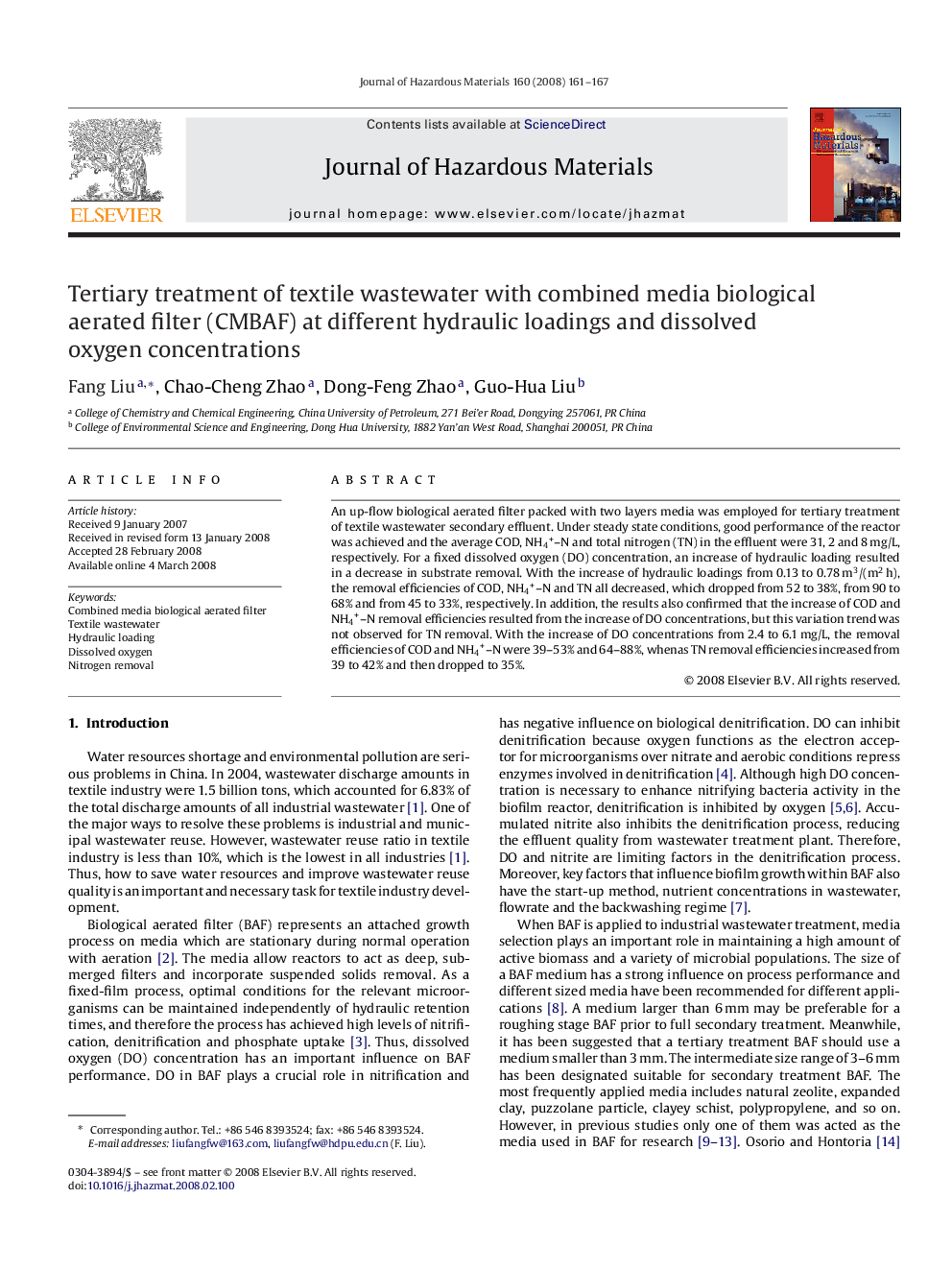| Article ID | Journal | Published Year | Pages | File Type |
|---|---|---|---|---|
| 582800 | Journal of Hazardous Materials | 2008 | 7 Pages |
Abstract
An up-flow biological aerated filter packed with two layers media was employed for tertiary treatment of textile wastewater secondary effluent. Under steady state conditions, good performance of the reactor was achieved and the average COD, NH4+-N and total nitrogen (TN) in the effluent were 31, 2 and 8Â mg/L, respectively. For a fixed dissolved oxygen (DO) concentration, an increase of hydraulic loading resulted in a decrease in substrate removal. With the increase of hydraulic loadings from 0.13 to 0.78Â m3/(m2Â h), the removal efficiencies of COD, NH4+-N and TN all decreased, which dropped from 52 to 38%, from 90 to 68% and from 45 to 33%, respectively. In addition, the results also confirmed that the increase of COD and NH4+-N removal efficiencies resulted from the increase of DO concentrations, but this variation trend was not observed for TN removal. With the increase of DO concentrations from 2.4 to 6.1Â mg/L, the removal efficiencies of COD and NH4+-N were 39-53% and 64-88%, whenas TN removal efficiencies increased from 39 to 42% and then dropped to 35%.
Related Topics
Physical Sciences and Engineering
Chemical Engineering
Chemical Health and Safety
Authors
Fang Liu, Chao-Cheng Zhao, Dong-Feng Zhao, Guo-Hua Liu,
